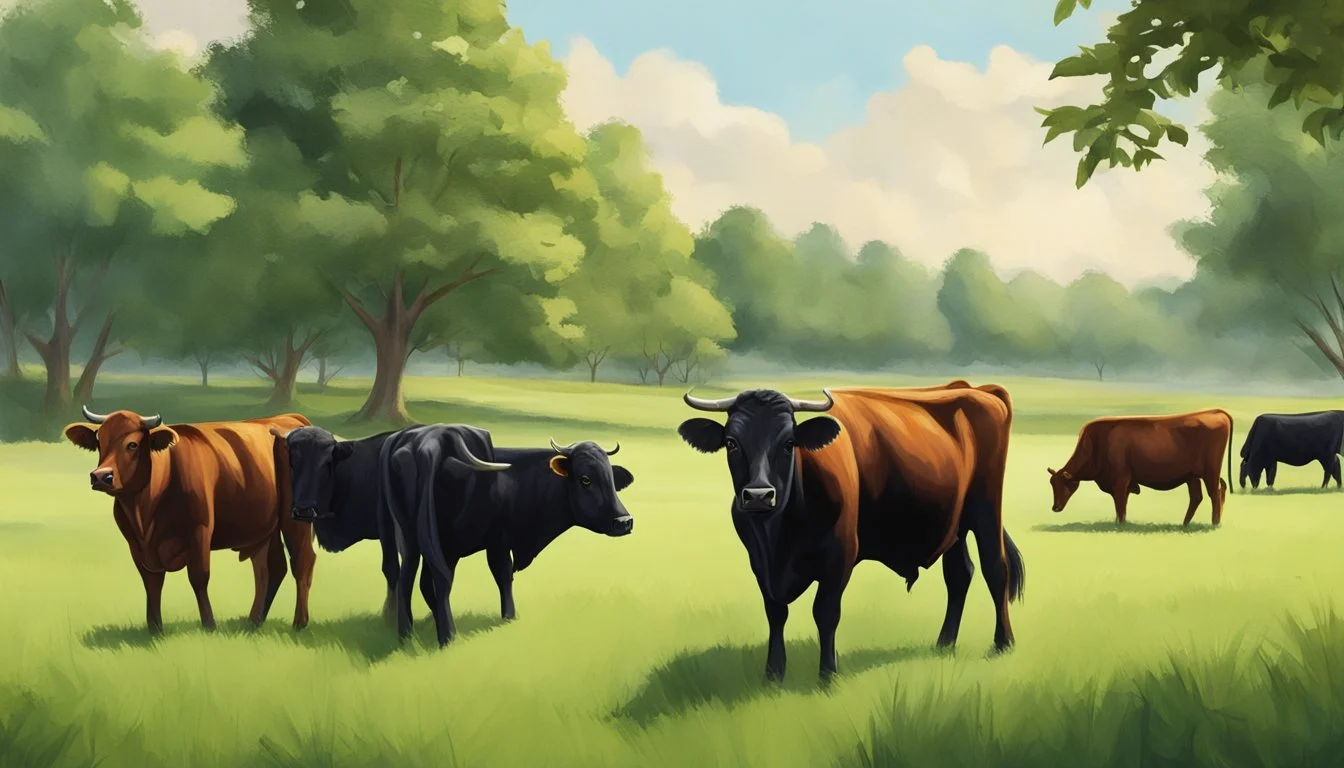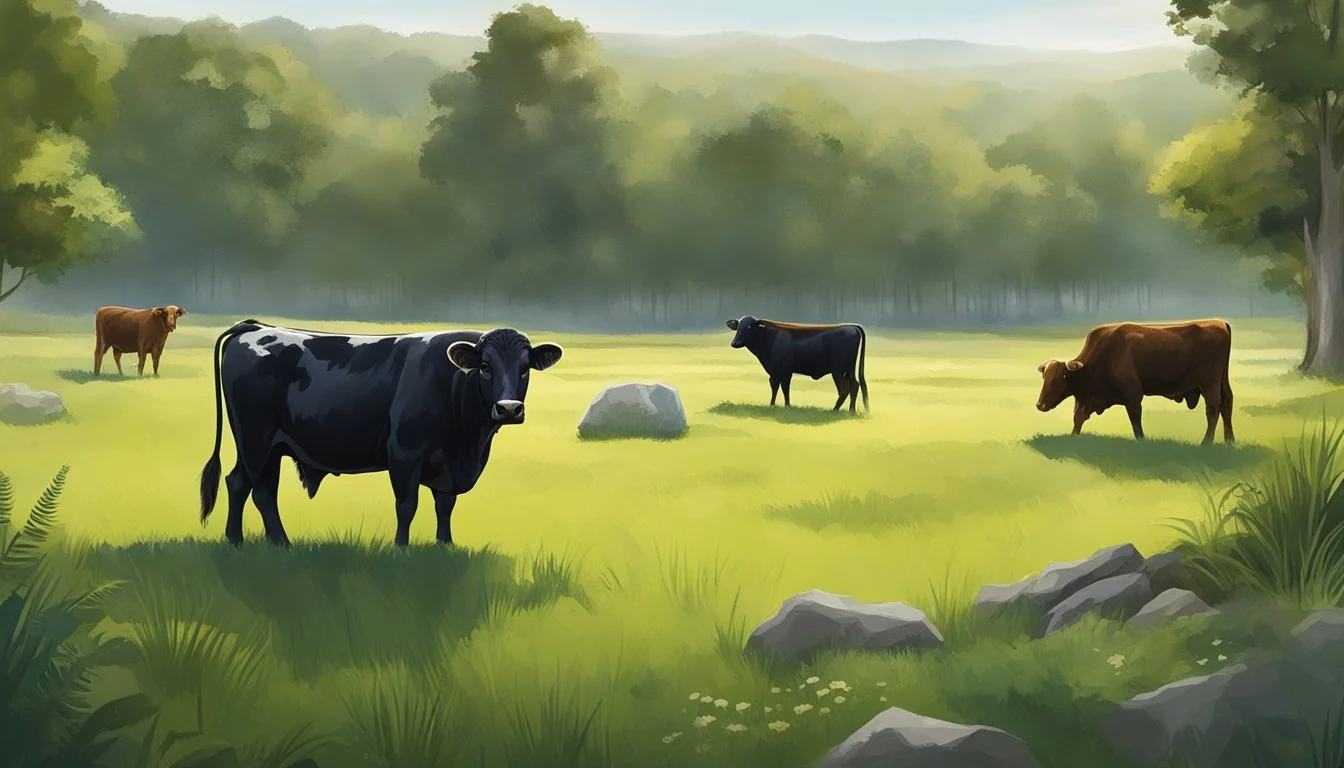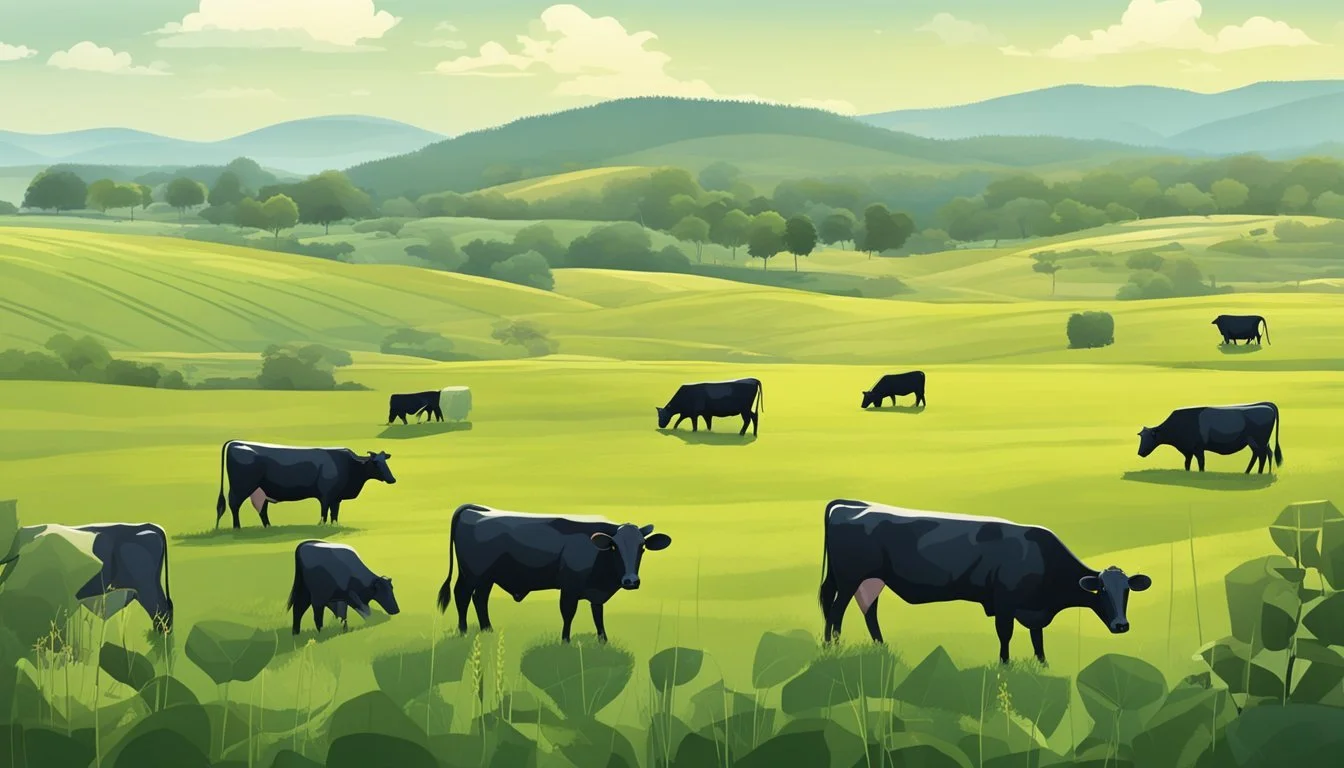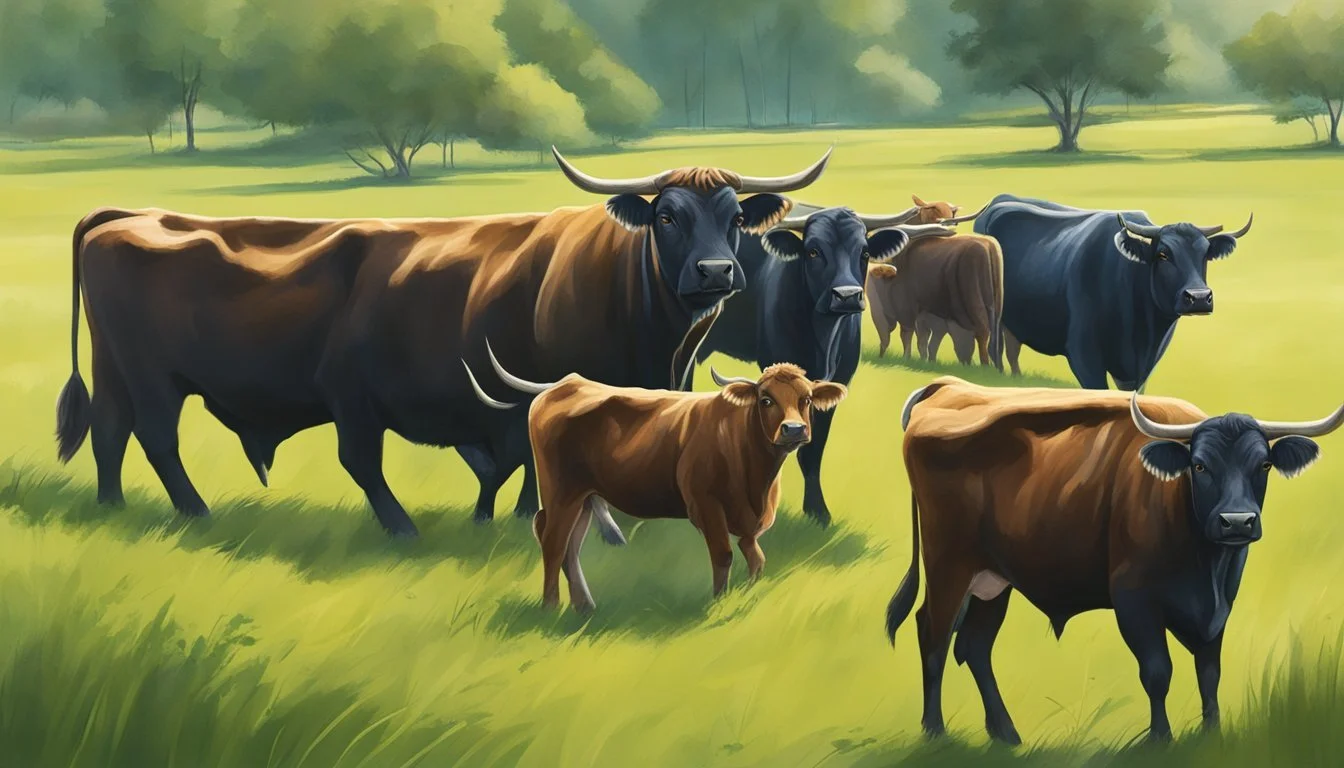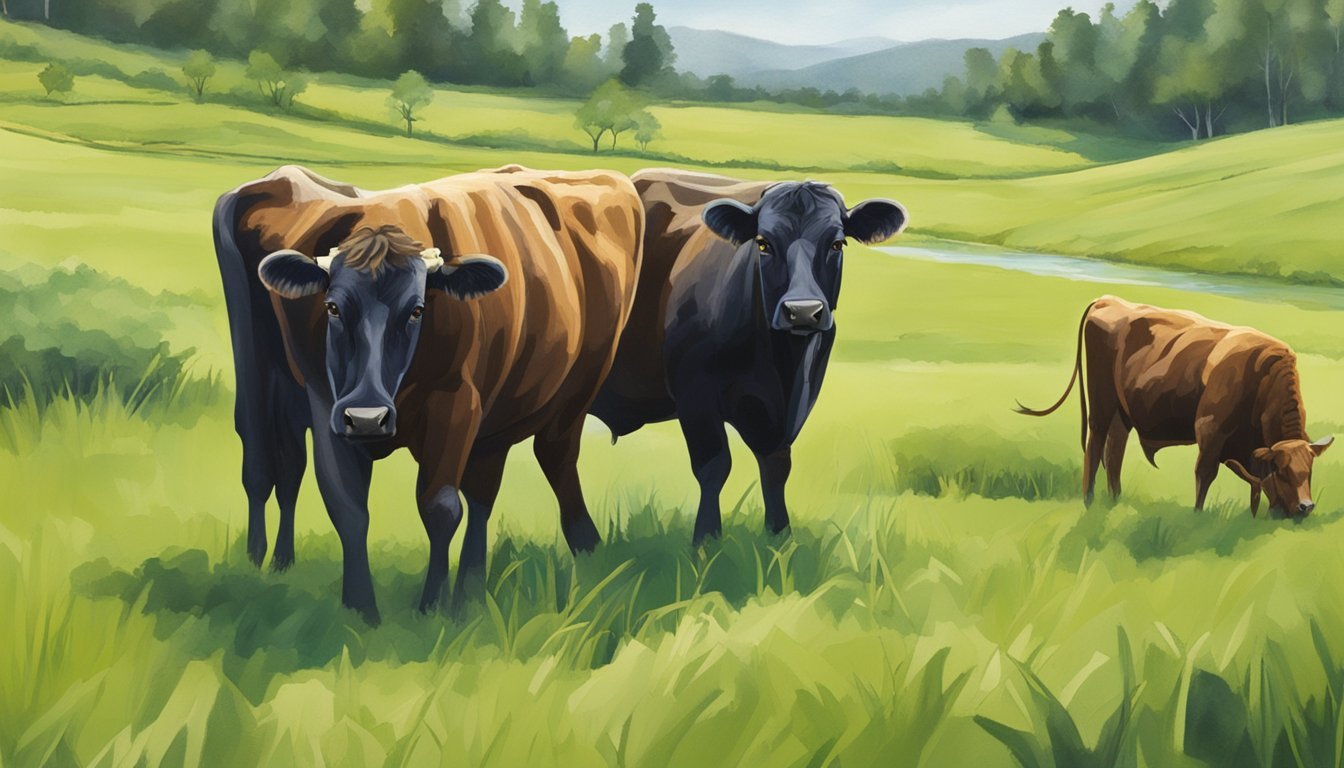The Benefits of Crossbreeding
Dexter Cattle as Pioneers in Enhancing Livestock Genetics
Crossbreeding has emerged as a pivotal strategy in the genetic improvement of cattle, combining the favorable traits of two distinct breeds to enhance certain characteristics such as milk production, disease resistance, and overall hardiness. In this context, Dexter cattle, a versatile breed known for its smaller size and quality beef, have entered the spotlight of genetic improvement programs. Their adaptability and ease of management make them an attractive choice for crossbreeding initiatives aimed at boosting the productivity and resilience of dairy and beef operations.
The genetic contribution of Dexter cattle in crossbreeding programs tends to yield offspring with improved feed efficiency and meat quality, traits highly sought after in the beef industry. Furthermore, when Dexters are crossed with dairy breeds, the resulting progeny often exhibit enriched milk compositions and an increased capacity for foraging. This can lead to reduced feed costs and a lesser environmental footprint. The strategic use of Dexter genetics aligns with the overall goal of enhancing cattle breeds to meet the demands of both small-scale farms and larger agricultural enterprises.
Understanding Crossbreeding
In the realm of cattle breeding, crossbreeding stands as a cornerstone strategy for genetic improvement. It leverages the strengths of different breeds to enhance performance and overall herd health.
Basic Principles of Genetic Improvement
The fundamental goal of genetic improvement in cattle is to elevate traits that contribute to the economic and physical viability of the herd. Selective breeding involves choosing parents with desirable traits to produce offspring that inherit these qualities. Genetic improvement hinges on the principles of heritability—the measure of how well offspring inherit a trait from their parents—and genetic diversity, which provides a pool of genes for selection.
Heritability: Ensures that selected traits are reliably passed on.
Genetic Diversity: Prevents inbreeding depression and maintains a broad selection of traits.
Benefits of Crossbreeding in Cattle
Crossbreeding integrates the genetic makeup of two or more distinct cattle breeds, aiming to combine and maximize desirable traits. It can lead to improvements in cattle performance in areas such as growth rate, milk production, and resilience to environmental stress. The strategy aligns with a defined breeding objective, a set of targeted outcomes, to systematically enhance the genotype of the herd.
Key Benefits:
Combines Breed Strengths
Aligns with Breeding Objectives
Heterosis and Hybrid Vigor
Heterosis, or hybrid vigor, is a pivotal concept in crossbreeding. It refers to the phenomenon where crossbred offspring exhibit superior qualities compared to the average performance of their purebred parents. These enhancements can manifest in various forms, including increased fertility, longevity, and overall productivity—crucial criteria within the scope of a comprehensive breeding program.
Heterosis Effects:
Increased Fertility
Improved Longevity
Enhanced Productivity
Dexter Cattle Characteristics
Dexter cattle are a distinct breed, valued for their dual-purpose utility, notably in both beef and milk production. Exhibiting traits desirable for small-scale operations, they exemplify efficiency and adaptability.
Traits and Performance
Fertility: Dexter cattle typically display high fertility rates, contributing to the breed’s efficiency.
Reproductive Performance: They are known for their ease of calving, with a low birth weight of calves, reducing birthing complications.
Productive Performance: Dexter cattle have a commendable body condition, maintaining good health with less feed compared to larger breeds.
Milk Yield: While smaller in stature, their dairy production is ample for their size, providing rich milk with high butterfat content.
Beef Production: Proportionate to their frame, Dexters offer a higher meat yield relative to other dairy breeds, with a favorable meat to bone ratio.
Disease Resistance: Dexter cattle are generally robust, with a strong natural resistance to many bovine diseases.
Genetic Merit of Dexter Cattle
Dexter cattle are genetically predisposed to certain merits that make them attractive for genetic improvement programs:
Efficiency: Their small size means they require less pasture and are more efficient converters of feed into milk and meat.
Adaptability: Dexters are well-suited to various climates and feed conditions, often thriving where larger breeds would not.
Genetic Diversity: The breed's diverse gene pool is an asset in crossbreeding programs, aiming to enhance traits like hardiness and productivity in offspring.
Crossbreeding Strategies
In advancing genetic improvement programs, strategic crossbreeding of Dexter cattle plays a crucial role. It enables cattle breeders to capitalize on breed complementarity and heterosis, leading to enhanced production traits and genetic gains.
Breeding Program Design
When designing a breeding program, it's imperative to define objectives and identify traits of interest that align with production goals. A two-breed rotational crossbreeding system can be initiated by mating Dexter cows with bulls of a complementary breed. The female progeny from this pairing would subsequently be bred back to Dexter bulls, fostering breed complementarity and promoting genetic variation that can lead to heterosis. Key performance information, such as calving intervals and milk yield, should guide the selection of compatible breeds. Success hinges on a well-thought-out breeding policy that includes both artificial insemination and natural service sires.
Utilizing Genetic Evaluations
Genetic evaluations provide a comprehensive understanding of an animal's pedigree and the potential genetic gain. Utilizing genomic selection tools, breeders can select Dexter cattle with superior genetics for crossbreeding programs. For Dexter cattle, particularly:
Heterosis (%): A metric used to gauge increased vigour from crossbreeding.
Genetic Evaluations: These include predicted transmitting ability (PTA) for various traits.
Through careful analysis of genetic evaluations, breeders can choose individuals that are likely to contribute positively to the genetic makeup of the offspring, ensuring that beneficial traits are passed on.
Considerations for Dexter Cattle
Dexter cattle have unique attributes that should be considered when crafting a crossbreeding strategy. Notably, their smaller size and efficiency are traits that can be beneficial when crossed with larger breeds to optimize feed efficiency and carcass quality. Here are several key considerations:
Backcrossing: Introducing Dexter genetics into crossbreed progeny to reinforce breed-specific traits.
Traits of Interest: Smaller stature, feed efficiency, and maternal abilities are sought-after Dexter characteristics.
Livestock Breeding: They can adapt to a variety of climates and management systems, which should be leveraged in a crossbreeding context.
Ultimately, careful selection and systematic breeding practices are essential for the success of integrating Dexter cattle into crossbreeding strategies aimed at genetic enhancement.
Improving Production and Fertility
Crossbreeding Dexter Cattle with other breeds can significantly enhance both beef and dairy production. Fertility and reproductive performance, crucial aspects in cattle breeding, are also positively impacted.
Impact on Beef and Dairy Sectors
Crossbreeding in Dexter cattle introduces individual heterosis, benefiting both beef and dairy production. This hybrid vigor contributes to improvements in various production metrics. In the beef sector, crossbreeding is shown to increase weaning weight, a critical factor for economic returns. In dairy, the infusion of new genetic material can enhance milk production and functional traits such as udder health, impacting overall dairy yields.
Key indicators in crossbreeding Dexter cattle include:
Increase in weaning weight due to individual heterosis
Shortened generation interval, leading to faster genetic improvement
Enhanced milk production traits for dairy operations
Fertility and Reproductive Traits
Fertility enhancement is another vital benefit of crossbreeding dexter cattle. Reproductive traits are often lowly heritable, making traditional selection less effective. Crossbreeding can improve these traits, leading to better reproductive performance. Notable reproductive advantages are observed in areas such as:
Calving ease, reducing the need for intervention and improving animal welfare
Calf viability, increasing the likelihood of calves surviving to weaning age
The fertility advancements realized from crossbreeding contribute significantly to the overall productive performance of the herd.
Genomic Tools and Technologies
Advancements in genetic technologies have revolutionized the way breeders approach the improvement of Dexter cattle. Such tools enable more precise selection and faster genetic gains in desired traits.
From Pedigree to Genomic Selection
Traditional cattle breeding relied heavily on pedigree information to estimate Expected Progeny Differences (EPDs) based on ancestors' traits. However, with the introduction of genomic selection, breeders now have the ability to analyze an animal's DNA directly. This shift allows for the measurement of thousands of genetic markers across the genome, enhancing the accuracy of EPDs and propelling genetic progress at a much faster rate than pedigree-based selection alone.
The Role of Gene Editing
Gene editing represents a front-line genomic tool that offers a leap forward in cattle genetics. Technologies like CRISPR/Cas9 allow precise alterations of DNA, making it possible to introduce or remove specific traits within the Dexter cattle genome. Gene editing is employed to enhance disease resistance, adaptability, and productivity. Yet, it is governed by strict ethical and regulatory guidelines to ensure safe and responsible use in breeding programs.
By integrating genomic selection and gene editing, breeders can make informed decisions and realize genetic improvements with unprecedented precision. These genomic technologies stand as cornerstones in the quest for a sustainable and optimized future in Dexter cattle breeding.
Breeding for Adaptability and Resilience
In the context of genetic improvement programs, breeding strategies that focus on adaptability and resilience are crucial. Dexter cattle, with their inherent qualities, play a pivotal role in such programs.
Coping with Environmental Changes
Dexter cattle exhibit remarkable heat tolerance and environmental adaptability, traits that are becoming increasingly important as farming systems face climate volatility. Their smaller stature not only means they require less feed but it also contributes to their ability to thrive in diverse environmental conditions. Breeders aim to enhance these characteristics to mitigate the effects of climate change, focusing on the augmentation of the cattle's innate capacity to regulate body temperature and maintain productivity in the face of temperature extremes.
Key Traits for Environmental Changes:
Heat tolerance
Efficient feed utilization
Stable production levels
Dexter Cattle in Various Climates
In various climates, Dexter cattle have demonstrated hardiness and resilience. These cattle are known for their ability to prosper in climates that range from damp and cool to hot and dry. Not limited to a specific environment, their flexibility makes them valuable in crossbreeding programs.
Climates Where Dexter Cattle Excel:
Temperate areas with significant rainfall
Regions with fluctuating temperatures
Arid and semi-arid zones
Selectively breeding Dexters helps mitigate inbreeding depression, which can result from closed herd practices. Their genetic diversity can boost the robustness of other breeds, resulting in offspring that are capable of enduring challenging climatic conditions while maintaining productivity.
Socio-Economic Impact of Crossbreeding
When integrating Dexter cattle into genetic improvement programs, one observes significant socio-economic impacts. These effects manifest in food security improvements for smallholder farmers and enhancements in economic values and profitability within the dairy sector, particularly in developing countries.
Smallholder Farmers and Food Security
In developing regions, smallholder dairy farmers using crossbreeding strategies often see improvements in both productivity and food security. Crossbreeding indigenous cattle with improved breeds like Dexters can enhance genetic selection differentials. This leads to cattle with better milk yield and disease resistance, positively affecting food supply and nutrition profiles.
Genetic Improvements:
Milk Yield: Higher lactation performance
Resistance: Enhanced disease resilience
Adaptation: Tolerance to environmental factors
Food Security:
Nutrition: Access to a more nutritious food source
Supply: Increased and more stable milk production
These changes, in turn, directly contribute to the dairy sector's growth by offering a reliable source of nutrition and improving the health management of the herd.
Economic Values and Profitability
The incorporation of Dexter cattle into crossbreeding programs can also escalate the economic values within the dairy sector. Smallholder farmers often experience increased profitability due to the improved productivity and efficiency of crossbred cattle.
Profit Factors:
Productivity: Higher milk production per cow leads to increased sales.
Efficiency: Crossbreds often require the same or fewer inputs for greater outputs.
Marketability: Enhanced traits in crossbred cattle can command higher market prices.
In the context of developing countries, where economic gains are crucial, the increase in social welfare fueled by effective crossbreeding programs can be substantial, broadening the economic impact beyond individual farms to local and national economies. This economic growth is instrumental for farmers aiming to elevate their living standards and contribute to their community's socio-economic development.
Cattle Diversity and Inbreeding Management
In the context of Dexter cattle, strategic crossbreeding programs help maintain genetic diversity and manage the risks associated with inbreeding. These programs are vital to sustaining the breed's long-term viability and productivity.
Avoiding Inbreeding Depression
Inbreeding depression can greatly impact cattle herds, leading to a decline in fertility, growth rates, and overall animal fitness. Dexter cattle, when bred within a limited genetic pool, are at risk of this phenomenon due to the reduced genetic variation. Avoidance of inbreeding is crucial and can be achieved by:
Introducing unrelated purebred Dexter bulls to a herd.
Documenting pedigrees meticulously to steer clear of mating genetically similar individuals.
Careful match-making backed by detailed genealogical records helps to prevent the potential adverse effects that inbreeding could have on the population.
Maximizing Genetic Variability
Crossbreeding with other suitable breeds can inject vital genetic diversity into a Dexter herd:
It can be beneficial to cross indigenous breeds with Dexter cattle to increase adaptive traits such as disease resistance and environmental resilience.
A strategic mix of 50% to 62.5% exotic inheritance is recommended, depending on the availability of resources like green fodder.
By balancing the genetic makeup, farmers can leverage the strengths of different breeds while minimizing the weaknesses, thus promoting a genetically robust and productive herd.
Crossbreeding Outcomes and Measurement
When integrating Dexter cattle into genetic improvement programs, it's important to assess both the benefits and challenges of crossbreeding and to measure the resulting performance using specific economic traits.
Assessing Benefits and Challenges
Crossbreeding Dexter cattle with other breeds can bring about significant benefits in production performance. The F1 generation, resulting from such a mating, often exhibits percent heterosis, where hybrid vigor can lead to improved animal performance metrics such as growth rates and milk production. However, challenges can include maintaining the desired traits and managing the potential for increased days open (the interval between calving and conception) that may occur if crossbreeding results in less fertile offspring.
Performance Metrics and Economic Traits
Specific traits are monitored to evaluate the success of crossbreeding programs, involving both production and carcass traits:
Economically relevant traits (ERTs), like age at first calving, days open, and marbling, are critical. These traits can directly affect the profitability of cattle operations.
The carcass traits of crossbred Dexter cattle are studied to determine the meat's quality. Marbling is particularly important as it correlates with consumer preference and market price.
Breed associations play a role in providing benchmarks and guidelines for performance metrics to be used in genetic evaluations.
By focusing on tangible outcomes and measurement, cattle crossbreeding can be optimized for genetic improvement while balancing the challenges.


